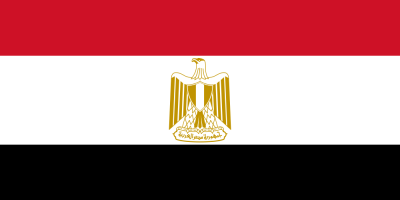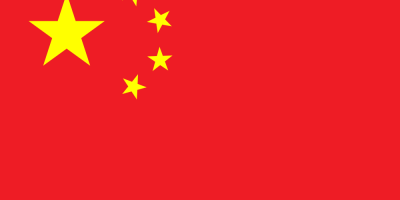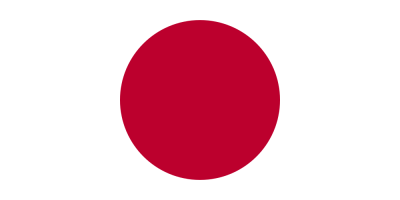Vietnam flag color codes features a bold yellow star centered on a field of red. The Vietnam flag color codes in various formats provide important specifications for accurately depicting this important national symbol. This article will examine the HEX, RGB, PANTONE, HSL, CMYK, HWB and NCOL values that comprise the Vietnam flag colors. Having the correct Vietnam flag color codes on hand enables designers and developers to reliably render the Vietnamese flag in any digital, print or artistic medium. Whether creating a website, mobile app, poster or other project, implementing the precise Vietnam flag color values is key to accurately reproducing this banner. With the essential information below, creatives can confidently display the red, yellow and star that symbolize the pride and aspirations of Vietnam.
Table of Contents
What are the colors of Vietnam flag?
The Vietnam flag consists of two main colors:
- Red – The background color is red. Specifically, Pantone 485 C, which is a bright, fire engine red.
- Yellow – The star in the center is yellow. The specific yellow is Pantone 123 C, which is a bright, golden yellow.
So in summary, the two colors that make up the Vietnam flag are:
- Pantone 485 C for the red background
- Pantone 123 C for the yellow star
The red background stands for the bloodshed and revolutionary struggle of the Vietnamese people. The yellow star represents the unity of the workers, peasants and working intelligentsia. The flag’s simple, yet symbolic colors of red and yellow have been used to represent Vietnam since the early days of the nation’s communist movement.
So the next time you see the iconic red and yellow banner of Vietnam, you’ll know the specific Pantone colors that make up this national symbol – Pantone 485 C red and 123 C yellow. The colors may seem simple, but they stand for the enduring sacrifices and values of the Vietnamese people.
Vietnam flag color codes & Color Names:
RED
| Color Model | Value |
|---|---|
| HTML | #DA251D |
| HEX | #DA251D |
| RGB | 218, 37, 29 |
| PANTONE | 186 C |
| HSL | 5°, 76%, 47% |
| CMYK | 0%, 83%, 87%, 15% |
| HWB | 5°, 10%, 15% |
| NCOL | Red |
YELLOW
| Color Model | Value |
|---|---|
| HTML | #FFD100 |
| HEX | #FFD100 |
| RGB | 255, 209, 0 |
| PANTONE | 116 C |
| HSL | 50°, 100%, 50% |
| CMYK | 0%, 18%, 100%, 0% |
| HWB | 50°, 0%, 0% |
| NCOL | Vivid Yellow |
What is the meaning of colors in the Vietnam flag?
The colors of the Vietnam flag represent the following:
Red background – This red symbolizes the bloodshed and revolutionary struggle of the Vietnamese people. It represents courage, defiance and determination to fight for independence and freedom.
Yellow star – The yellow star stands for the unity of workers, peasants and working intelligentsia. It also symbolizes the prosperous future of the Vietnamese people.
So in summary:
- Red background – Revolutionary struggle, sacrifice, courage
- Yellow star – Unity, prosperity
The flag’s simple yet symbolic colors have been used since the early days of Vietnam’s communist movement. While the design has evolved over the decades, the red and yellow colors have stood the test of time.
Beyond the national meaning, the red evokes the country’s strength and pride, while the yellow represents Vietnam’s future prosperity. The communist red also demonstrates solidarity with flags of other socialist nations.
Altogether, the red and yellow of the Vietnam flag communicate unity, courage, aspirations and connections to the nation’s complex past and hopeful future. The vivid colors make the Vietnam flag easy to recognize around the world.
Explore More Flag Colors:
FAQs: Frequently Asked Questions:
Is Vietnam a rich or Poor Country?
Vietnam is generally considered a lower-middle-income country. It has made significant economic progress over the past few decades, experiencing rapid economic growth, industrialization, and poverty reduction.
Vietnam’s economy has transitioned from an agrarian-based system to one that is more industrial and service-oriented. The country has been successful in attracting foreign direct investment, expanding its export sector, and achieving positive economic indicators. The government has implemented economic reforms and liberalization policies that have contributed to Vietnam’s development.
Why is Vietnam famous?
Here are some key aspects for which Vietnam is well-known:
Historical Significance:
Vietnam has a rich history marked by various dynasties, colonial periods, and conflicts. The Vietnam War, in particular, had a profound impact on the country and is a significant chapter in modern history.
Cultural Heritage:
Vietnam boasts a vibrant and diverse culture influenced by Chinese, French, and Southeast Asian traditions. Its cultural heritage is reflected in traditional art forms, architecture, festivals, and cuisine.
Breathtaking Landscapes:
The country is known for its stunning natural landscapes, including the lush Mekong Delta, Halong Bay with its karst formations, beautiful beaches, terraced rice fields in Sapa, and the mountainous regions in the north.
World Heritage Sites:
Vietnam is home to several UNESCO World Heritage Sites, including the Old Quarter of Hanoi, the ancient town of Hoi An, the Imperial City of Hue, and Halong Bay, recognized for their cultural and natural significance.
Delicious Cuisine:
Vietnamese cuisine is renowned worldwide for its fresh and flavorful dishes. Pho (noodle soup), banh mi (Vietnamese sandwich), spring rolls, and various local specialties contribute to Vietnam’s reputation as a food destination.
Friendliness of the People:
Vietnamese people are often recognized for their warmth and friendliness. Visitors often remark on the hospitality and welcoming nature of the locals.
Economic Growth:
Vietnam has experienced rapid economic growth and development in recent decades. The country has become a significant player in the global market, attracting foreign investment and expanding its export-oriented industries.
Traditional Arts:
Vietnam has a rich tradition of arts and crafts, including water puppetry, traditional music, and silk painting. These artistic expressions showcase the creativity and skill of the Vietnamese people.
Is Vietnam very expensive?
Here are some considerations:
Accommodation: Vietnam offers a wide range of accommodation options, from budget hostels to luxury hotels. Generally, accommodation is affordable, especially in smaller cities and rural areas.
Food and Dining: Street food and local eateries in Vietnam are known for being delicious and budget-friendly. Dining out at local restaurants is generally affordable, and street food is a popular and inexpensive option.
Transportation: Public transportation, such as buses and trains, is usually affordable. Domestic flights can be reasonable, especially when booked in advance. Taxis and ridesharing services are also relatively inexpensive.
Activities and Attractions: Entrance fees to attractions and activities vary, but many cultural sites and natural attractions are reasonably priced. Some places may offer discounted rates for students or provide free entry on certain days.
Shopping: Local markets and street markets offer a wide range of goods at affordable prices. Bargaining is common in markets, and it can be part of the shopping experience.
Is Vietnam in Asia Or Europe?
Vietnam is located in Asia. It is a Southeast Asian country situated on the eastern edge of the Indochinese Peninsula. To its north, Vietnam shares borders with China, to the west with Laos, and to the southwest with Cambodia. The country has a long coastline along the South China Sea to the east. Therefore, geographically and geopolitically, Vietnam is considered part of the Asian continent.
Is Vietnam a safe country?
Here are some considerations regarding safety in Vietnam:
Low Crime Rates: Vietnam has relatively low crime rates, and violent crime against tourists is uncommon. Petty crimes such as pickpocketing can occur, particularly in crowded areas, so travelers are advised to be vigilant with their belongings.
Traffic Safety: Traffic conditions in some Vietnamese cities, especially Ho Chi Minh City and Hanoi, can be chaotic. Pedestrians should exercise caution when crossing streets, and travelers using motorbikes or bicycles should be aware of local traffic rules.
Health and Safety: Travelers are advised to take standard health precautions, including vaccinations and safe food and water practices. It’s also recommended to have travel insurance that covers medical emergencies.
Natural Disasters: Vietnam is prone to natural disasters such as typhoons and floods, especially during certain seasons. Travelers should stay informed about weather conditions and follow local authorities’ advice.
Political Stability: Vietnam is politically stable, but travelers should stay informed about local developments and follow any guidelines or restrictions set by local authorities.
Scams: While scams targeting tourists are not widespread, travelers should be cautious about overcharging, especially in tourist areas. It’s advisable to agree on prices beforehand and be cautious of touts.
Local Customs: Respecting local customs and traditions is essential for a positive travel experience. Understanding and adhering to cultural norms can contribute to a safe and enjoyable visit.
Is Vietnam richer than Thailand?
Here are some key considerations:
GDP and Economic Indicators: Thailand has a higher nominal GDP than Vietnam. However, GDP alone may not provide a complete picture of the overall wealth distribution and living standards in a country.
Income Distribution: The distribution of wealth within a country is an important factor. Both Vietnam and Thailand have varying levels of income inequality, and regional disparities may exist.
Economic Structure: The composition of the economy, including sectors like agriculture, manufacturing, and services, can impact overall economic development. Each country has its own economic structure.
Tourism: Both Vietnam and Thailand are popular tourist destinations, contributing significantly to their economies. The impact of the tourism sector can influence economic indicators.
Foreign Direct Investment (FDI): Both countries attract foreign investment, which can positively impact economic development. Policies, infrastructure, and business environments may vary.
Cost of Living: The cost of living can differ between Vietnam and Thailand, with factors such as housing, food, and transportation playing a role in the overall affordability for residents and visitors.
Do they speak English in Vietnam?
English is not the official language of Vietnam, but it is increasingly taught in schools, and many people in urban areas, especially those working in the tourism industry, may have a basic understanding of English.
What is the religion of Vietnam?
The primary religions in Vietnam include:
Buddhism: Buddhism is the largest religion in Vietnam, and the majority of Vietnamese people identify as Buddhists. There are various sects and traditions of Buddhism practiced in the country, including Mahayana Buddhism.
Folk Religion: Many Vietnamese also adhere to traditional folk beliefs and practices that involve ancestor worship, spirit veneration, and other indigenous rituals. These practices are often intertwined with other religious traditions.
Christianity: Christianity, both Catholicism and Protestantism, has a significant presence in Vietnam. The Catholic Church, in particular, has a long history in the country, dating back to the arrival of Portuguese missionaries in the 16th century.
Caodaism: Caodaism is a syncretic religion that originated in Vietnam in the early 20th century. It incorporates elements of various major world religions, including Buddhism, Taoism, Confucianism, Christianity, and Islam.
Hòa Hảo Buddhism: Hòa Hảo is a sect of Buddhism that originated in Vietnam in the early 20th century. It has a significant following in the Mekong Delta region.
Islam: There is a small Muslim community in Vietnam, primarily among the Cham ethnic group. The Cham people practice Islam, and their mosques can be found in certain areas of the country.
What is the currency of Vietnam?
The official currency of Vietnam is the Vietnamese đồng, abbreviated as VND. The symbol for the Vietnamese đồng is “₫.” The đồng is the sole legal tender used in Vietnam for all transactions, and it is issued by the State Bank of Vietnam (Ngân hàng Nhà nước Việt Nam). Banknotes and coins are used for various denominations.













